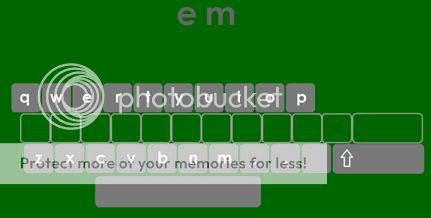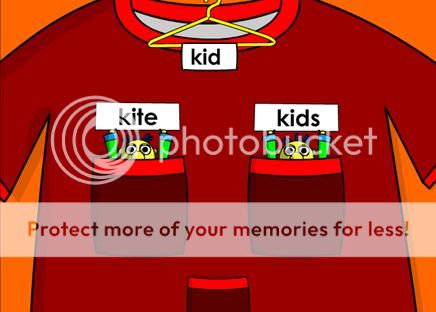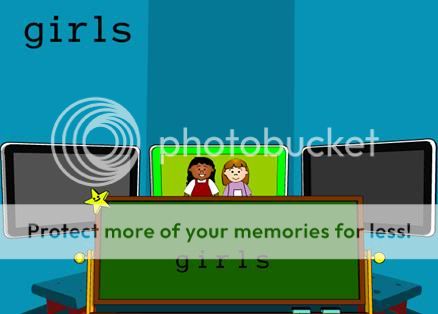For the past few months, my 7 yos has been using Reading Kingdom's online reading and writing program as part of a review for TOS.
Reading Kingdom is a fun, easy to use program that is geared for ages 4-10, to work on reading and writing to a third grade level. This program was developed by Dr. Marion Blank. Who is Dr. Blank?
From the Reading Kingdom's website:
Dr. Blank is the director of the Light on Literacy program at Columbia University in New York and is the author of "The Reading Remedy." She has spent over forty years studying how children learn to read and is recognized by her peers as one of the world's top experts in literacy. She has used her reading system to help thousands of children – both strong and struggling readers – learn how to read. Now she is making her method available to every child.
Some of the highlights of Reading Kingdom
- It customizes itself to each child
- Most children can do the program on their own after just a few weeks
- It's fun and children enjoy doing it
- It's created by Dr. Marion Blank, one of the world's top experts in literacy
- It works with any other curriculum a child may be using
- And, it's the only system that teaches all 6 skills needed for reading & writing success!
The chart below shows the areas that The Reading Kingdom utilizes in this program.
How the program works ~
After you sign up your child, they log on and are assessed on their skills on the keyboard. This particular area is stressed since this program relies heavily on keyboarding use. If your child is weak in this area, they will not do well in this program. By having your student work on keyboarding skills before starting the program, less frustration and great success can be achieved. The skills survey is achieved through a series of games that helps determine the best placement for your child.
One of the games in the skills assessment
The program will "grade" your child's assessment and place them in one of six levels:
- Pre-reading Level
- Teaches the Visual Sequencing and Keyboarding Skills that underlie reading and writing. A child goes through one or both of these programs if the Skills Survey shows that these components are needed.
- Level 1
- Gets your child reading, understanding and writing meaningful ideas by teaching key nouns (kids, girl, bird), verbs (actions such as eat, walk, fly) and "helping" words (the, some, is, can, are). Once a set of words has been taught, the child gets to read a book containing those words, along with words previously taught. As in all subsequent levels, there are six books in Level 2.
- Level 2
- Greatly expands the range of ideas your child reads and writes by adding new nouns (puppies, man, water), verbs relevant to those nouns (run, fix, move, including words that convey motivation such as need, want, like), pronouns (she, I, we), additional "helping" words (that, also, both, of) and question words (who, what, which).
- Level 3
- Enhances your child's ability to tell and understand stories by teaching the words to convey past tense (was, did, were), along with increasing the range of nouns (ground, rocks), verbs (push, think, hurt), "helping" words (most, on, any), and adjectives (sad, happy, nice, -y as in dirty, rocky).
- Level 4
- Gets your child reading subject matter that is different from typical stories and essential to school success. It introduces a wide variety of objects and beings from the natural world (animals, rainbow, moon, tongue, group, people, earth) and higher level question words (why, when, how). These are then incorporated into books that convey science type information.
- Level 5
- Has your child reading rich stories which provide a sense of fun while teaching complex cause and effect relationships by expanding the range of nouns (computer, letter, fish) and verbs (change, know, float), and introducing a set of complex ideas (luck, true, never, change, sure).
The program is designed for the child to be able to work independently. The parent can check the status and progress of their child at any time. There are easy to follow charts showing exactly where your child is in the program.
Shows the status of the student
Legend of what the status icons mean
In the top picture you can see that the first two sections have been completed, while the remaining two sections are not required. This means that the student tested beyond Letter Land and is ready for one of the Reading Levels. The middle picture shows that the student has completed Level 1 and the date they completed it as well as how well they did. In this case, they did excellent. Level 2 is in progress and the student is doing "Excellent" in that level as well.
The student would continue through the program, completing each level, until they had successfully accomplished the program.
So, how did the program work in our own day to day schooling? My son tested into Letter Land, which was no surprise to me! He is still in the learning stages of reading and doesn't use the keyboard much at all, so this was an area that I knew he would be weak in. As such, we spent a very long time in Letter Land! To the point that he was beginning to get frustrated with the program and I didn't think I'd ever actually get to see what the reading portion looked like! LOL
The program helps your student by showing them where the letters are on the keyboard. If they type something wrong, a very patient voice says, "Watch", then shows exactly where the letters are and tells them to try again. They work one row at a time adding in the shift and punctuation in the same manner.
Letter Land, working on keyboarding skills
However, finally, he did get a "Congratulations!" and he moved out of Letter Land and into Level 1 of the reading program. Yay!!! What a happy day that was. :)
Once in the reading portion, he was asked to write pretty hard words for a beginner. This is the programs way of tweaking the program to meet your students needs. If your child doesn't get the word correct, they go through a series of games that help them learn how to spell that word. They work on matching and word recognition and then typing the word again. It didn't take long for my son to remember how to read and spell the words he was not familiar with this method. He was so excited. :)
Each exercise is a fun game that kept my son interested and wanting to learn more. He is still only on Level 1 (he just got out of Letter Land last week ;) ), so I can't share what happens beyond this level. I do know that it won't be long before he is moving on up through the program as he is asking to do his Reading Kingdom Lessons every day!
Level 1 game
Level 2 game
Level 3 game
Level 4 game
Pros:
- Easy to use
- Colorful and fun "games" that are teaching reading and writing
- successfully used in a variety of settings
- It's kid customized. The Reading Kingdom customizes itself to a child so they don't become frustrated with material that is too advanced for them or bored with material they already know.
- Excellent and friendly customer service.
- With the focus on keyboarding and spelling needed for success, completing Letter Land can become tedious and discouraging.
- Weak in phonics. If you child learns best with phonics, or you are a proponent of a strong phonics base, this might not be the program for you.
- The time allowed to type in a response could be longer. There were several times where my son read the word correctly and was attempting to type it in correctly but due to his slower typing speed he "timed out" requiring him to redo the page. This can become discouraging.
- The cost is high for the average homeschooling family. They do offer scholarship programs though, so every child can use this program! (this is a pro and a con together. :) )
There is so much on the Reading Kingdom's website, it is worth your time to go check it out for yourself and spend some time there looking through all their links. Some of the ones that I found helpful (this is just a couple of many!) video testimonials of this program here and tutorials here, how it's customized to your child. Lots of good stuff there, don't miss it!
Reading Kingdom is subscription based. They have a 30 day free trial, which requires no credit card information to use, so you can try it before you subscribe.
There are two ways to subscribe. You can either subscribe monthly, for $19.99/month with no monthly minimum, or $199.99 for a twelve month subscription. If you have more than one child using the program, you can add on additional students for $9.99/month. To sign up for the 30 free trial as well as subscribe, click here.
Check out their store for some other products, including Dr. Blank's book, The Reading Remedy.
Thank you, Reading Kingdom, for giving us this opportunity to review your product. We really appreciate the generous amount of time you have allowed us to use this and I look forward to seeing how my two boys excel in their reading through this year!
I received this product free for the purpose of reviewing it. I received no other compensation for this review. The opinions expressed in this review are my personal, honest opinions.















1 comment:
Thanks for taking the time to review our Reading Kingdom program.
Next week, we'll be featuring it on our Facebook page - http://www.facebook.com/readingkingdom. I invite you to stop by!
The Reading Kingdom teaches 6 skills that Dr. Marion Blank, the Director of the Light on Literacy program at Columbia University and the creator of the Reading Kingdom, has determined are required for reading and writing success. These skills are visual sequencing, motor skills for writing, phonics (sounds), syntax (grammar), semantics (meaning) and comprehension (text). So Reading Kingdom does teach the sounds of letters and letter blends, but it does so in the context of the other skills required for reading mastery.
With regard to your point about the time we allow for children to respond, this is something we have worked very hard to get right and we are continuing to work on it. On the one hand, you don't want to give a child too little time. But on the other hand, if you give a child too much time, then she or he may not really be mastering the material before moving on to the next level. Part of mastery is being able to accomplish a task within a reasonable amount of time. However, we are always reviewing how the program works and will continue to do so as we move forward.
Thanks again.
Post a Comment